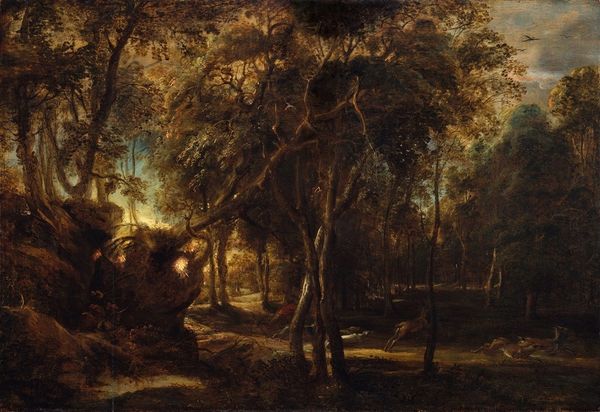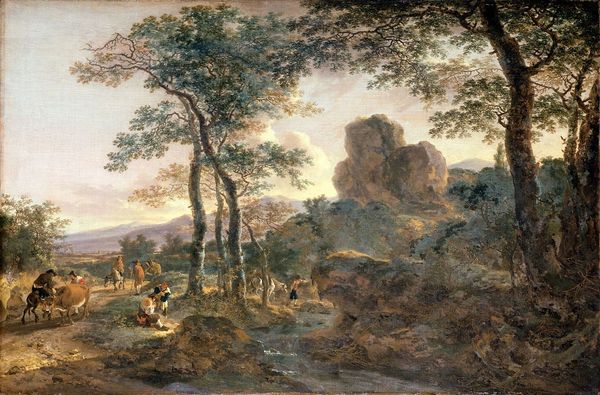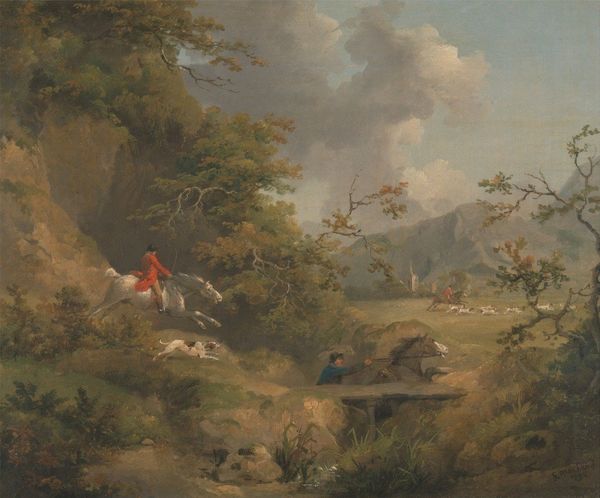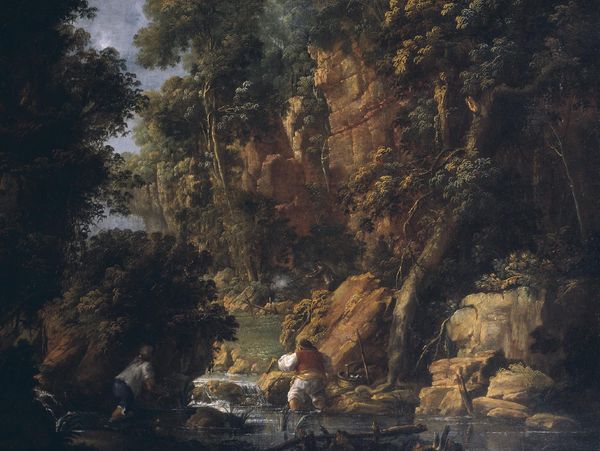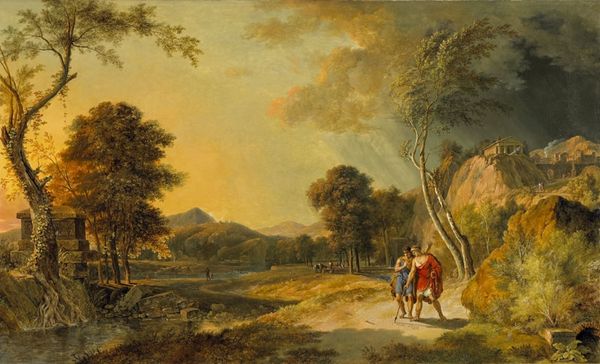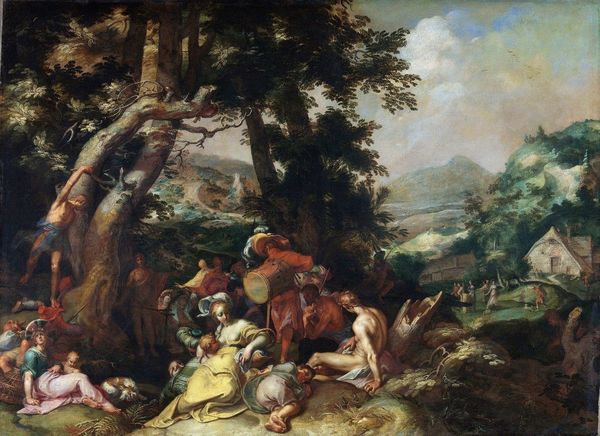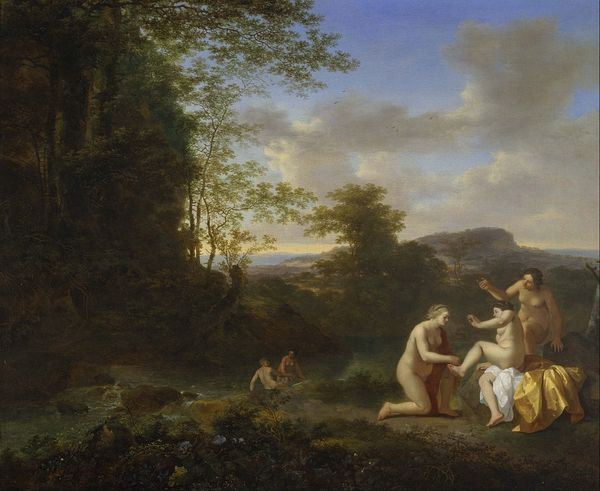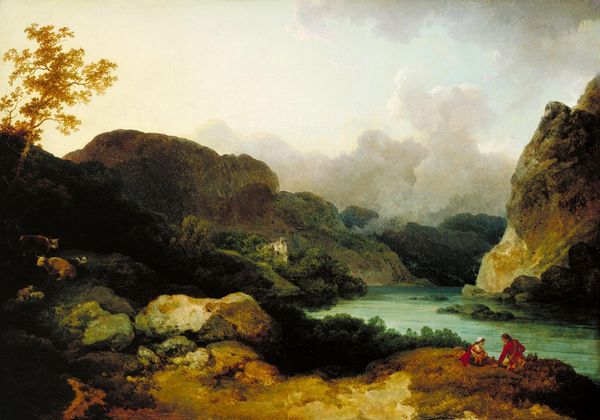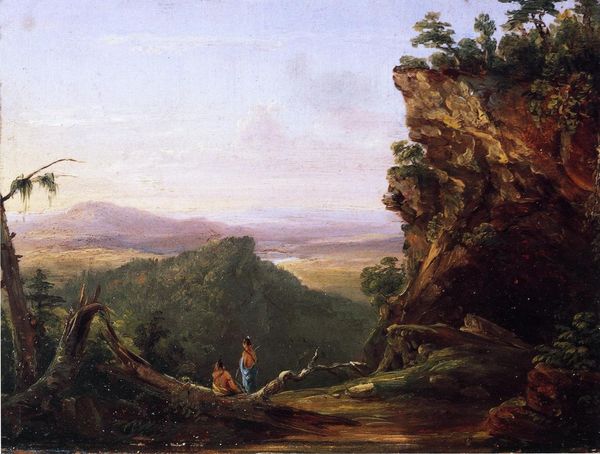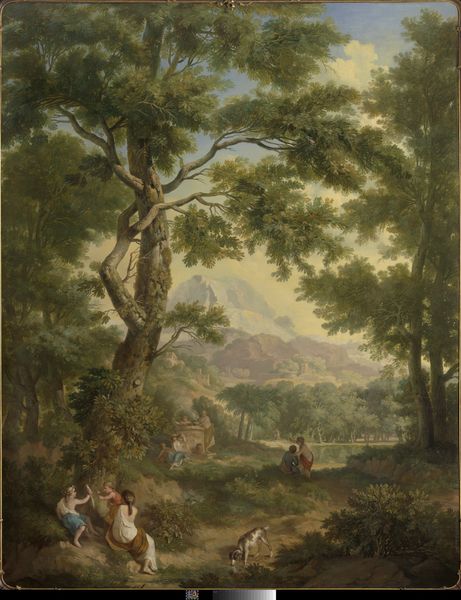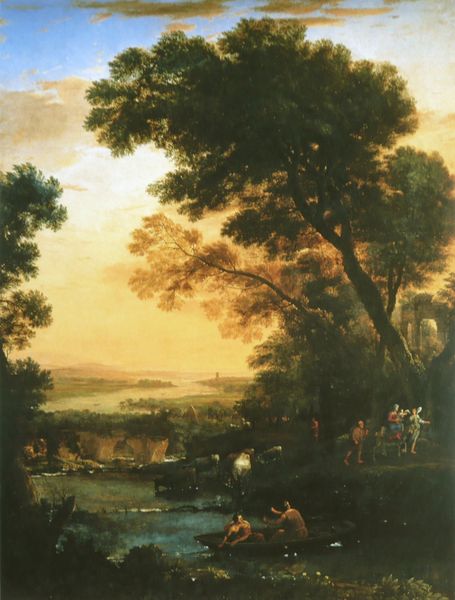
A Landscape with the Story of Cadmus Killing the Dragon Possibly 1765
0:00
0:00
Dimensions: support: 1264 x 1572 mm frame: 1497 x 1800 mm
Copyright: CC-BY-NC-ND 4.0 DEED, Photo: Tate
Editor: This is Francesco Zuccarelli’s, *A Landscape with the Story of Cadmus Killing the Dragon*, located at Tate Britain. It depicts a scene of conflict within a vibrant landscape. What strikes you about this piece? Curator: It's interesting to consider this landscape as a site of power struggle. Cadmus's act isn't just heroic; it's a claim of dominance over the natural world. How does the dragon figure into the colonial narrative? Editor: Colonial narrative? I hadn't considered that. Curator: Think about it. Dragons are often symbols of indigenous power, guarding territory. Cadmus's victory could be seen as a symbolic displacement, laying claim to the land. Does seeing it that way change your perception? Editor: It definitely adds a layer of complexity that I hadn't initially recognized. Thanks for the insight! Curator: Absolutely! It's about questioning whose stories get told and whose are silenced within these idyllic landscapes.
Comments
tatebritain 8 months ago
⋮
http://www.tate.org.uk/art/artworks/zuccarelli-a-landscape-with-the-story-of-cadmus-killing-the-dragon-t04121
Join the conversation
Join millions of artists and users on Artera today and experience the ultimate creative platform.
tatebritain 8 months ago
⋮
This painting illustrates the story of Cadmus, founder of the ancient city of Thebes, as told in Ovid’s Metamorphoses. Cadmus is slaying the dragon that has killed his companions. They have died trying to collect spring water from the dragon’s cave, not knowing that it is sacred to the god Mars. Cadmus is protected by a lion-skin and armed with a javelin. The Italian painter Zuccarelli left Venice for London in 1752, his mythological landscapes popular with British patrons. In 1768 he was commissioned to produce works for George III, and was a founding member of The Royal Academy. Gallery label, February 2016
